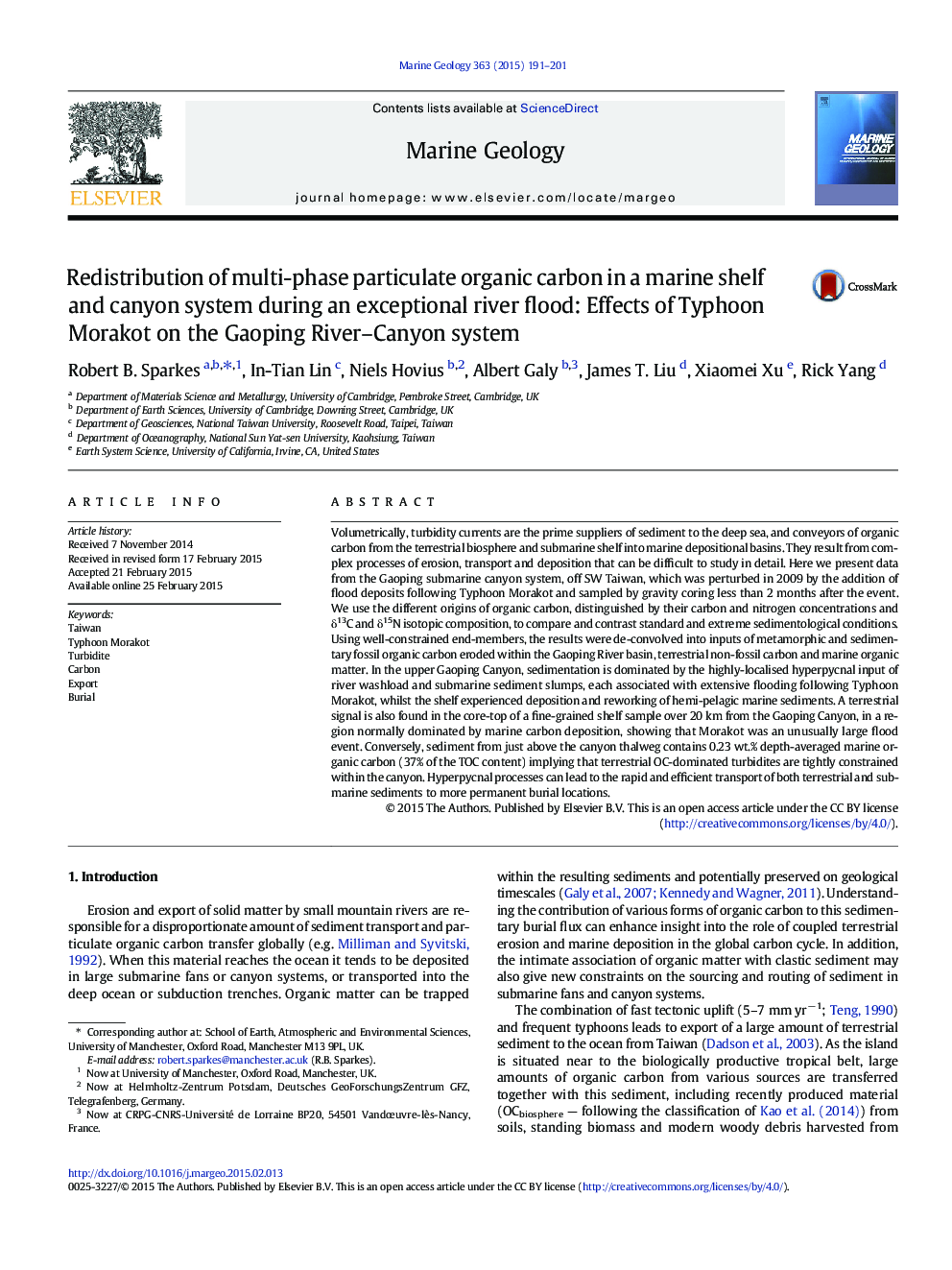| Article ID | Journal | Published Year | Pages | File Type |
|---|---|---|---|---|
| 6441526 | Marine Geology | 2015 | 11 Pages |
Abstract
Using well-constrained end-members, the results were de-convolved into inputs of metamorphic and sedimentary fossil organic carbon eroded within the Gaoping River basin, terrestrial non-fossil carbon and marine organic matter. In the upper Gaoping Canyon, sedimentation is dominated by the highly-localised hyperpycnal input of river washload and submarine sediment slumps, each associated with extensive flooding following Typhoon Morakot, whilst the shelf experienced deposition and reworking of hemi-pelagic marine sediments. A terrestrial signal is also found in the core-top of a fine-grained shelf sample over 20Â km from the Gaoping Canyon, in a region normally dominated by marine carbon deposition, showing that Morakot was an unusually large flood event. Conversely, sediment from just above the canyon thalweg contains 0.23Â wt.% depth-averaged marine organic carbon (37% of the TOC content) implying that terrestrial OC-dominated turbidites are tightly constrained within the canyon. Hyperpycnal processes can lead to the rapid and efficient transport of both terrestrial and submarine sediments to more permanent burial locations.
Related Topics
Physical Sciences and Engineering
Earth and Planetary Sciences
Geochemistry and Petrology
Authors
Robert B. Sparkes, In-Tian Lin, Niels Hovius, Albert Galy, James T. Liu, Xiaomei Xu, Rick Yang,
